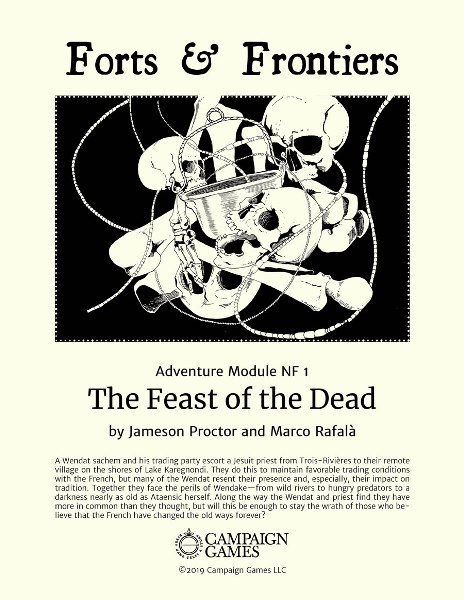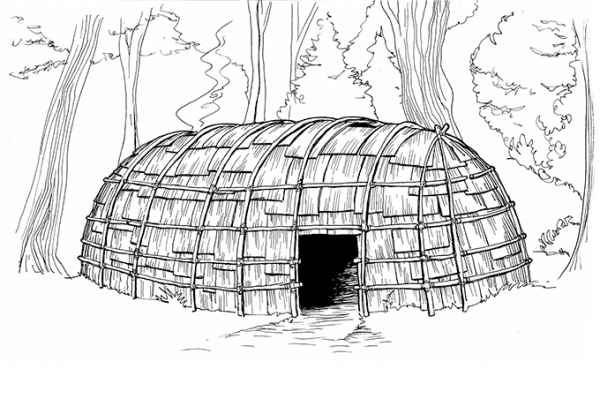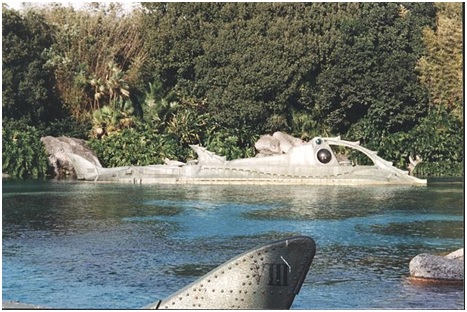Forts & Frontiers The Feast of the Dead: Influences and Inspirations
By Jameson Proctor
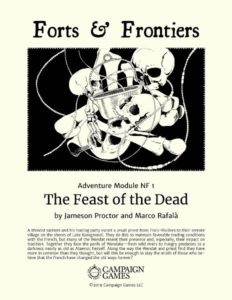 Our primary goal in creating Forts & Frontiers The Feast of the Dead was to bring our love of 17th and 18th century North America to the gaming table in a manner that allows game masters and players to tell deep, engaging stories about this critical period of history. We considered a number of systems as the basis for the game. We also considered designing our own. Eventually, we decided to go with Dungeons & Dragons 5th Edition. Our thinking was that we can help get games to the table faster by not requiring game masters to potentially familiarize themselves with the period and a new set of rules.
Our primary goal in creating Forts & Frontiers The Feast of the Dead was to bring our love of 17th and 18th century North America to the gaming table in a manner that allows game masters and players to tell deep, engaging stories about this critical period of history. We considered a number of systems as the basis for the game. We also considered designing our own. Eventually, we decided to go with Dungeons & Dragons 5th Edition. Our thinking was that we can help get games to the table faster by not requiring game masters to potentially familiarize themselves with the period and a new set of rules.
That said, we’ve been roleplaying in some shape or form since the early 80s and are fans, game masters, and players of a wide range of systems and modules. Many unique aspects of Forts & Frontiers are influenced by these systems and modules but ultimately implemented using the core mechanics of D&D 5e. The end result is a system that we’ve found is familiar to a wide range of players while also presenting new mechanics that facilitate historic encounters, exploration, and the challenging of player characters’ personal and cultural beliefs.
We’ve highlighted a few of these mechanics below.
Wandering History
When designing Forts & Frontiers, we kept coming back to the question of how to give GMs the tools they need to bring 17th and 18th century North America alive at the table without having to prepare beyond familiarizing themselves with the adventure itself. One answer was the idea of wandering history.
Inspired by such luminous examples as TSR’s Isle of Dread, Frog God Games’ Hex Crawl Classics, and Cubicle 7’s Journeys and Maps, wandering history is more than just the random encounters with potential enemies that its namesake, wandering monsters, brings to mind. Instead, it is fragments of story, when woven into a game, drive the narrative forward and provide a historically accurate sense of time and place.
Here’s an example from the draft of The Feast of the Dead Deluxe:
Father Superior
You are greeted by a tall priest. His face is weathered and wizened from years of hard traveling. His hair, once black it would seem, is now mostly as white as driven snow. His gaze is clear and penetrating.
The French will recognize the priest as Father Jean de Brébeuf and the Wendat as the Norman Sorcerer Echon. Depending on where he is encountered, Brébeuf has either just arrived at or is on his way to Trois-Rivières where he will take counsel with Paul de Chomedey and resupply before returning to Wendake in the spring.
Father Brébeuf will take Anatole aside and let him know deadly illness is spreading among the Wendat. “I have saved as many souls as I can, but I need help. I give thanks that you are joining me in our holy endeavor.” He will also warn Anatole that some of the Wendat have become suspicious of their order. He fears this suspicion will turn to open hostility if the deaths continue.
Before parting ways, Father Brébeuf will offer communion to all baptized members of the party. Treat all who take communion as blessed for 1 day.
As you can see, this is by no means a groundbreaking mechanic. But, we do it find it very useful in bringing the history to life through interactions with NPCs and the exploration of discovered locations.
The wandering history encounter with Brébeuf is just one of many that will be found in The Feast of the Dead Deluxe. Others include a Haudenosaunee raiding party, French trappers, and an abandoned village raised by a recent raid.
Travel
Travel in uninhabited regions figures heavily in The Feast of the Dead. There’s something about this that always reminded us of Tolkien. So, we looked to Cubicle 7’s The One Ring Roleplaying Game for inspiration. The basics of travel in Forts & Frontiers will feel familiar to those who have played that system, However, it’s implemented in play with 5e squarely in mind.
Here’s how travel is described in The Feast of the Dead:
When traveling, each character assumes a travel role. The roles are as follows: Guide, Scout, Hunter, and Forager. The role of Guide can only be assumed by one character. All other roles can be assumed by multiple characters.
Depending on the situation (navigating a river, foraging for food, tracking animals, etc.), a player will make an ability check (often Wisdom or Intelligence). The outcome depends on the degree of success or failure. We won’t go over that in this article, but here’s an example of how it works:
Hunting in the autumn is a DC 15 Wisdom test. On success, the hunters fell a doe which provides enough food to last for 1 week. On a critical success, the hunters fell a buck which provides enough food to last for 2 weeks.
On failure, the hunters have overexerted themselves while felling a doe. As a result, they gain 1 level of exhaustion.
If the test fails on a 1, the hunt proves fruitless, and one of the hunters, determined randomly, steps into a deadfall trap, set and forgotten earlier in the year. The character takes 1d6 damage. All Dexterity tests made for that character for the remainder of the adventure are made at disadvantage.
We’ve found the addition of travel roles gives structure to the narrative and encourages exploration while tying it to ability check makes it easy for players to pick up and keeps things moving at the table.
Belief
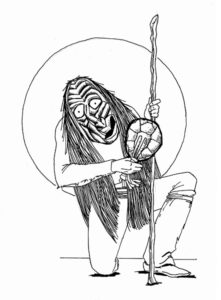 We’re big fans of all things Burning Wheel HQ (The Burning Wheel, Mouse Guard, Torchbearer). We especially love the belief mechanic for the way in which it encourages players to engage with their characters and those characters to engage with one another.
We’re big fans of all things Burning Wheel HQ (The Burning Wheel, Mouse Guard, Torchbearer). We especially love the belief mechanic for the way in which it encourages players to engage with their characters and those characters to engage with one another.
While Belief as found in The Feast of the Dead is cultural in scope and spontaneously came out of our early playtests, the central role we knew belief played in the Burning Wheel system influenced us to explore our Belief mechanic and eventually give it a central role in The Feast of the Dead
Here’s how it’s described in the Free RPG Day edition:
As North American and European civilizations come into contact with one another, characters’ beliefs will be challenged. When an extraordinary event occurs, for example, a European priest heals someone by laying on hands or a creature of North American legend is encountered, players must make a Wisdom saving throw with the DC set by the magnitude of an event. On failure, their characters gain a point of Belief. The more Belief points characters have, the more disposed they are to the influencing civilization.
Through further playtesting and community feedback, we’ve learned that tying Belief tests to Wisdom saving throws alone can feel too random and not provide players enough agency to interact with the push-pull the collision of cultures creates. In The Feast of the Dead Deluxe, players will be able to leverage their characters’ traits, ideals, bonds, and flaws to make Belief tests at advantage/disadvantage thereby allowing them more opportunity to resist or give into the influence of another culture.
This approach takes what we love about belief in The Burning Wheel and implements it with a slight spin on the core 5e mechanics of saving throws, advantage, and personality characteristics.
As we mentioned at the top, these are just a few examples of the new rules and variations Forts & Frontiers introduces to support more realistic, historical play. It’s been an interesting exercise in restraint in which we keep bringing things back to the 5e core no matter how far afield we go. We hope the result is an easy to pick up game that allows players to explore the wondrous and sometimes terrifying world that is our past.
Forts & Frontiers The Feast of the Dead Deluxe is currently on Kickstarter through August 20. You can check out the campaign here.
The Free RPG Day edition of The Feast of the Dead is available on Drive Thru RPG. You can download it for free here.
